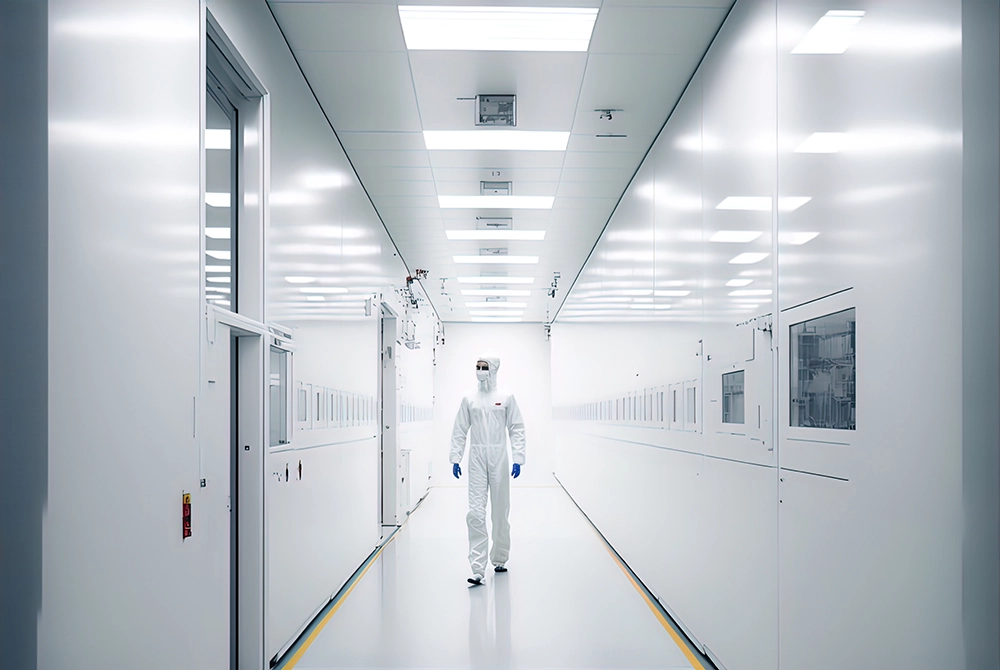
Cleanrooms are critical environments used in various industries, including pharmaceuticals, biotechnology, semiconductor manufacturing, aerospace, and more. These controlled spaces are designed to minimize the presence of airborne particles and contaminants, ensuring product quality, safety, and integrity. To achieve these stringent requirements, cleanrooms undergo rigorous validation, testing, and maintenance processes. In this article, we’ll explore the significance of each of these aspects in maintaining the efficiency and effectiveness of a cleanroom.
I. Cleanroom Validation: Ensuring Compliance and Performance
Cleanroom validation is the systematic process of confirming that the facility meets the specified cleanliness standards and operates within predefined parameters. This process is crucial in ensuring compliance with industry regulations and ensuring the cleanroom’s functionality and effectiveness.
Key steps in cleanroom validation include:
- Design Qualification (DQ): This initial stage involves reviewing the cleanroom’s design plans and intended use to ensure it aligns with the specific requirements of the industry and the products to be manufactured within the cleanroom.
- Installation Qualification (IQ): During IQ, the cleanroom’s physical installation is assessed to verify that it has been constructed and installed according to the approved design and regulatory guidelines.
- Operational Qualification (OQ): OQ involves testing the cleanroom under dynamic conditions to ensure that all systems and equipment operate as intended. This includes verifying parameters such as airflow velocity, air changes per hour, temperature, and humidity levels.
- Performance Qualification (PQ): PQ is the final step where the cleanroom is tested under actual working conditions with simulated loads. This confirms that the cleanroom consistently maintains the required cleanliness levels and meets its performance specifications.
II. Cleanroom Testing: Regular Checks for Compliance
After the initial validation, routine testing and monitoring are essential to ensure ongoing compliance and to detect any deviations that may arise during the cleanroom’s operation.
Common cleanroom testing procedures include:
- Particle Count Monitoring: Airborne particle counts are regularly measured using laser particle counters. These instruments sample the air at specified locations to determine the number and size distribution of particles present.
- Airflow Velocity and Direction: Testing the airflow patterns and ensuring that the correct direction and velocities are maintained help prevent cross-contamination and ensure proper air circulation.
- Filter Integrity Testing: Filters are vital components in cleanrooms. Regular integrity testing ensures they function correctly and efficiently in removing particles from the air.
- Microbial Monitoring: Especially critical in pharmaceutical and biotechnology cleanrooms, microbial monitoring involves testing for the presence of viable microorganisms that could compromise product sterility.
- Pressure Differentials: Cleanrooms are often designed with specific pressure differentials to prevent contamination from adjacent areas. Monitoring these differentials helps maintain the desired airflow direction.
III. Cleanroom Maintenance: Sustaining Optimal Conditions
Cleanroom maintenance is an ongoing process that involves regular inspections, preventive maintenance, and prompt resolution of any identified issues. Proper maintenance is essential for extending the cleanroom’s operational life, reducing downtime, and ensuring consistent performance.
Key maintenance practices include:
- Regular Cleaning: Thorough cleaning of surfaces, equipment, and floors is necessary to remove dust and other contaminants that might accumulate over time.
- Filter Replacement: Filters should be replaced at regular intervals to maintain their effectiveness in removing particles from the air.
- Equipment Calibration: Cleanroom equipment, such as particle counters and temperature monitors, should be calibrated periodically to ensure accurate readings.
- Staff Training: Well-trained personnel are crucial for maintaining cleanroom integrity. Proper training ensures that employees follow correct procedures and understand the importance of their actions on cleanroom performance.
- Environmental Monitoring System (EMS) Maintenance: The EMS, which monitors various parameters within the cleanroom, needs regular maintenance and calibration to ensure accurate and reliable data.
In conclusion, cleanroom validation, testing, and maintenance are essential processes that guarantee the cleanliness, safety, and efficiency of controlled environments. Through thorough validation, regular testing, and diligent maintenance practices, cleanrooms can continue to operate at optimal performance levels, meeting the stringent requirements of various industries and ensuring the integrity of the products produced within their controlled spaces.
Finding a Solution that Works for You:
With over 30 years of experience designing, constructing, and maintaining cleanroom and laboratory facilities, Pacific Environmental Technologies is an industry leader widely recognized for quality, service, and technical expertise. We offer solutions from simple modular enclosures to large-scale manufacturing facilities to mobile, trailerable, and containerized solutions for field-deployment at the required point-of-use.
Let’s work together to find a solution that meets for your unique needs!